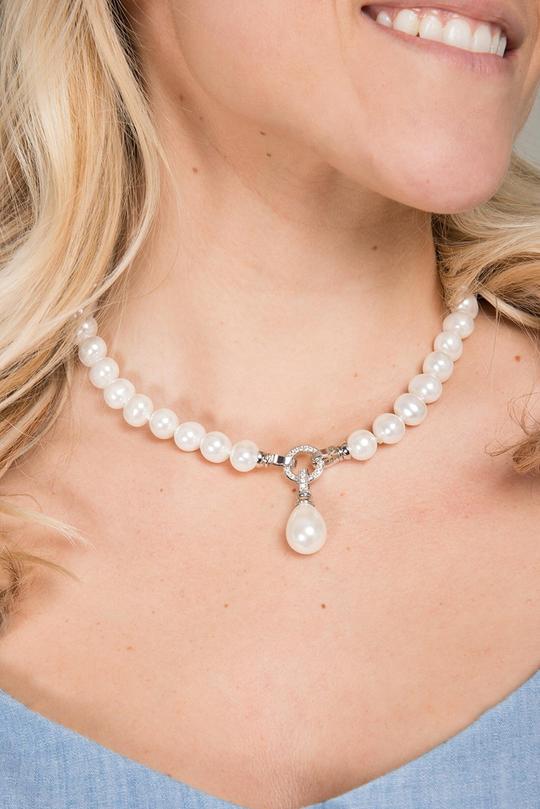History Significance of necklaces
A necklace is a type of adornment worn suspended around the neck. It is most normally made in adaptable structures like a chain, as a series of globules, pearls, gemstones, or other regular materials, or made of a more rigid band of metal decorated with gemstones, pearls, dots, or different strategies like etching, filigree, repoussé, granulation, for instance. Lengths of necklaces shift, and explicit sorts identified with limits long reach from a short choker or canine restraint necklace that fits close to the fundamental part of the neck to a more extended neck chain or series of dabs called a sautoir, now and then worn hanging out to or past the midriff.
Representative Meanings
Likewise with different bits of gems, the necklace has been a significant site of adornment for the body yet in addition to correspondence for the individual. As esteemed material culture, necklaces convey riches, influence, connection, notoriety, levels of assets and expertise, and components of character and position. The sturdiness of adornments like necklaces made of metal, glass dabs, or gemstones gives a chance to appreciate and comprehend the innovation, social practices, creativity, and style of different societies and far off time spans.
Early Necklaces
A basic necklace produced using a line of nearby natural materials like shells, teeth, or bone globules is one of the types of adornments taken on by early societies all throughout the planet. All the more valuable materials from farther away were additionally esteemed for early necklaces, every now and again as dabs, for example, those of Mediterranean red coral found in a Neolithic internment in the Alps (around 4200-3400 B.C.E.). Other early kinds of necklace incorporated the torque or force, an antiquated Celtic necklace made of curved metal, and the lunula, a level, bow molded and engraved variety of the torc found in Bronze Age Ireland and Scotland (around 1800-1500 B.C.E.).
Style and Trends
Necklaces were made to show suitable beautiful and complex components through every period and from one district to another. Every period additionally has some impact upon those after, and restorations of styles, for example, traditional Greek and Roman necklaces or Egyptian beadwork collars, are predominant. During the Middle Ages, gems turned into a more fundamental component of dress, and necklaces supplanted pins as the essential type of gems in the late Gothic and early Renaissance time frames. Necklaces set with gemstones and weighty gold necklaces with pendants were in style as a differentiation of abundance and economic wellbeing from the fourteenth and fifteenth hundreds of years through the sixteenth and mid seventeenth hundreds of years.
A Matched Set
The necklace was a focal piece in the eighteenth-century parure or coordinating with a set of adornments for a lady, which likewise included pin, studs, wristbands, and a pendant or crown. The necklace was intended to be worn as evening wear with a brought down décolletage bodice, while higher neck areas of daywear incorporated the ornament or the pendant all things considered. This idea of coordinating with a set kept going through the mid 20th century until dress turned out to be more relaxed and when moderate yet at the same time alluring ensemble gems opened up. New materials, for example, plastic and new advances identified with large scale manufacturing have incredibly extended the social collection. Necklaces in the late 20th century were styled to pursue both design and mainstream society directions, yet in addition to address different issues for ladies’ dress dependent every so often, taste, or inclination, and levels of stylishness and moderateness.
Materials
Certain materials have since quite a while ago held rule for necklaces all through the Western history of dress, including gold, jewels, and pearls. The precious stone necklace is perhaps the most costly image of riches, fabulousness, and notoriety from the beginning of time. Pearls were the material of decision for Roman ladies, and recoveries of Classical period subtleties found in Renaissance or mid eighteenth-century neoclassical dress have included pearl necklaces. The pearl was additionally adored by Elizabeth I in the sixteenth century, starting a pattern for long pearl necklaces hung and stuck over intricate stomachers. During the 20th century, the short strand of pearls turned into an exemplary present for youthful American and British ladies on their sixteenth birthday celebration, and it remains a well known decision for ladies’ experts and business dress gatherings and wedding outfit.












